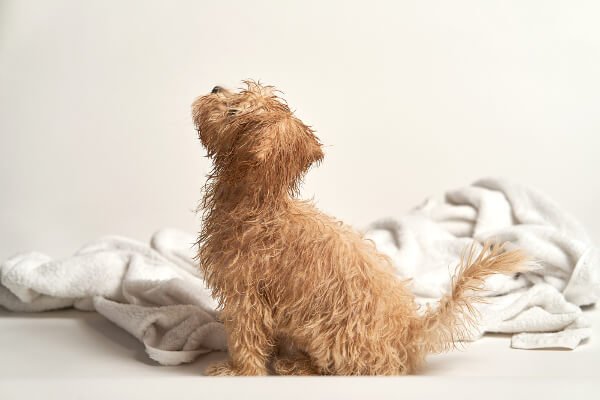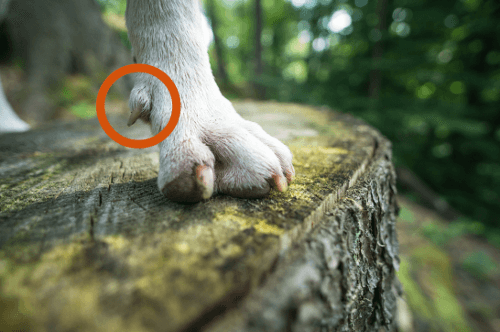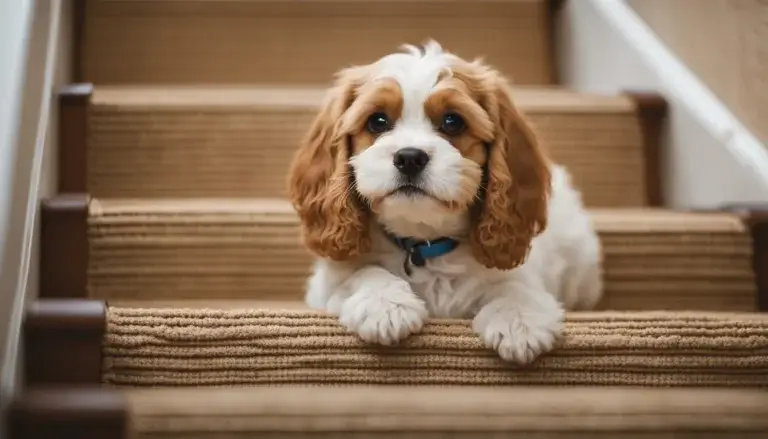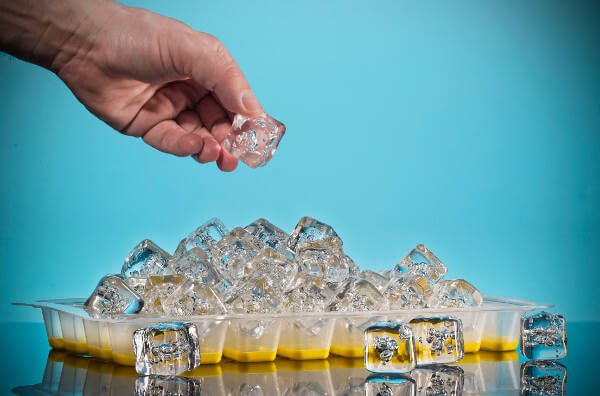Luxating Patella in Cavapoos

One of my dogs has been diagnosed and treated for this condition so I unfortunately know it well.
Luxating Patella in Cavapoos is quite common so don’t panic.
Although not life-threatening it can, if severe enough, have a huge impact on your Cavapoo’s quality of life if left untreated.
Tucker (my Cavalier) was diagnosed with a grade 3 luxating patella, had surgery, and is now 100% fine.
I am not a registered Veterinarian but am basing this article on my own experience with this condition.
Please note: If you suspect your dog might be suffering from a luxating patella or if they start to limp or not put any weight on one of their legs then please take your dog immediately for veterinarian care.
- Introduction
- What is Luxating Patella?
- How is Luxating Patella Diagnosed?
- Is Luxating Patella in Dogs Serious?
- Can a Luxating Patella Correct Itself?
- Is Luxating Patella Painful For Dogs?
- Can a Dog Live With Luxating Patella?
- Does Luxating Patella Get Worse With Age?
- Should You Walk a Cavapoo With a Luxating Patella?
- How to Prevent Luxating Patella in Cavapoos
- Managing Mild Luxating Patella
- Treatments, Cost, and Recovery
- How I handled Tucker's Crate Confinement
- Conclusion
Introduction
The term luxating means “out of place” and the term patella means “kneecap”, which is usually located in a groove at the end of the thigh bone (femur), right above the knee (stifle).
Luxating patella is a common issue among small dogs like Cavapoos, although dogs with bigger sizes can suffer from it too.
It can cause problems like recurring pain, inflammation, and cartilage damage in your dog.
Knowing what luxating patella is and how to recognize its symptoms in your dog is a great first step towards reaching a solution.
From there, you can understand what can be done about it, and even how to prevent it in the future.
What is Luxating Patella?
Dog kneecaps or patellas are not as visible as human ones.
They are almond-shaped and are located right at the knee joint.
The kneecap and its tendon form what is called the extensor mechanism.
They are both usually aligned with each other.
When your dog moves his knee joint in or out, the kneecap glides up and down along a groove.
“A luxating patella is when the kneecap is dislocated and moves out of the conventional groove that it is supposed to glide along.”
When this happens, your Cavapoo will not be able to move his knee properly resulting in limping or an abnormal gait.
Depending on the severity of your dog’s luxating patella, a grade or degree of severity will be assigned ranging from one to four.
This is what those grades mean:
Grade 1: The kneecap has moved out of the groove but is easily able to move back by itself.
Grade 2: The kneecap moves out of the groove quite often but can still easily move back to the correct location by itself. In this case, the dog is still usually able to walk on it.
Grade 3: The kneecap is out of the groove most of the time and one of the lower leg bones, called the tibia, is a bit twisted.
Grade 4: The patella or kneecap is permanently displaced and the tibia is severely twisted. The groove where the kneecap is supposed to rest is almost non-existent or shaped convexly.

How is Luxating Patella Diagnosed?
For grade 1 luxating patella, dogs usually do not show very visible symptoms.
Oftentimes, grade 1 luxating patella is accidentally stumbled upon by your vet during a regular checkup.
For higher grades, your dog may show symptoms like limping for shorter or longer periods depending on the severity, picking their leg up while walking, and exhibiting an abnormal gait (skipping) with knees that do not extend properly.
If you notice your dog showing any of the above symptoms, he should be taken to the vet.
Your vet will feel the dog’s knee along with performing multiple tests and physical examinations to ensure the stability of the kneecap.
If diagnosed, your vet will then assess what grade of luxating patella your dog is suffering from.
Is Luxating Patella in Dogs Serious?
Luxating patella is not a life-threatening situation for your dog.
In most dogs, the severity level of a luxating patella is mild.
If your dog suffers from frequent limping and is in severe pain, surgery might be the best option.
However, if the limping only happens once every few weeks, your dog’s luxating patella can be fixed by simply massaging the kneecap back into its place or some physiotherapy.
Can a Luxating Patella Correct Itself?
For dogs suffering from grade 1 luxating patella, it can resolve itself and the kneecap can be pushed back into its place without any outside intervention.
For dogs suffering from grade 2 luxating patella, the kneecap does usually go back into the femur groove, however, due to the frequent sliding out of the kneecap, the knee can suffer trauma, putting the dog in pain.
For higher degrees of patellar luxation, professional treatment is required.

Is Luxating Patella Painful For Dogs?
If the luxating patella is mild, the dogs commonly don’t show any signs of pain.
They may simply hold the leg up, hyper-extending the knee which will slide the kneecap back into its normal position.
However, in moderate to severe cases, luxating patella can be a very painful condition for your Cavapoo.
Many dogs cry out in pain and constantly hold their leg up over and over again due to the pain.
The chronic dislocation of the patella can lead to the development of arthritis in older dogs as well as the presence of joint pain and increased immobility.
Patellar luxation also exposes the dog to other knee injuries, such as torn cruciate ligaments.
Can a Dog Live With Luxating Patella?
While painful, luxating patella will not kill your dog.
Most dogs, including Cavapoos, can live their entire lives with a grade 1 or grade 2 luxating patella without any severe pain or developing arthritic knees.
For dogs with more moderate to severe luxations, surgery is needed as soon as possible to prevent any further bone problems and mobility issues in the dog.
Does Luxating Patella Get Worse With Age?
Since luxating patella is a degenerative and, oftentimes, chronic condition, it does get worse with age in most cases unless it is extremely mild.
In mild cases, it is just something that is occasionally there and does not affect the dog’s quality of life significantly.
However, unfortunately, as dog’s age, they may develop arthritis due to their luxating patella.
This happens in severe cases, especially if treatment is not sought in time which leads the dog to develop arthritis and other bone problems that get worse with age.

Should You Walk a Cavapoo With a Luxating Patella?
Yes, you can walk your Cavapoo if they have a grade 1 or grade 2 luxating patella.
If they have a grade 3 or 4 then they may be in too much pain to go for a walk.
You will need to assess how they are doing before considering taking them out.
The key thing to keep in mind is to go for light activities for shorter periods.
For example, you can take your dog for a short 15-minute walk, 5 days a week, and then rest up for the other 2 days.
This routine can then be built up gradually as your dog gets better.
How to Prevent Luxating Patella in Cavapoos
In most cases, a luxating patella is genetic.
The only way to avoid this happening is for breeders to only breed with dogs that have sound knees.
Unfortunately, a lot of breeders do not test their dogs.
Also, some genetic diseases can skip a few generations only to surface later on.
Managing Mild Luxating Patella
The first stepping stone towards managing mild luxating patella is a quality diet consisting of premium kibble, or raw food diet geared towards improving your dog’s overall health and well-being.
Moreover, your dog should be kept lean and should not be obese.
Your Cavapoo’s weight may not seem like a big issue to you but even a few extra pounds on your dog can put their joints under considerable stress resulting in patellar luxation or worsening of it.

Treatments, Cost, and Recovery
Treatments
The specific treatment that your Cavapoo requires for its luxating patella will depend on the degree or grade of luxation.
Several different treatment courses are usually taken.
Diet and Weight
It is very important to keep your dog’s weight under control.
If they become overweight then it puts extra strain on their kneecaps which causes the kneecap to dislocate more often.
Exercise
To keep your Cavapoo’s muscles strong and healthy, it is important to incorporate light exercise into the dog’s lifestyle.
Keeping the dog inactive for long periods will weaken their muscles and bones, dropping their immunity against bone diseases.
When it comes to keeping a dog that suffers from a luxating kneecap active, moderate exercise is the way to go.
They should be taken on regular walks along with walking up and down a slight incline whenever possible.
This is going to strengthen the muscles around their knees.
Supplements
Supplements can significantly help with the treatment of luxating patella.
Supplements such as glucosamine that contain minerals, enzymes, amino acids, and lubricating agents are especially helpful.
These supplements help build cartilage and lubrication in injured joints.
Another great supplement to ensure your Cavapoo’s nutritional needs are met is Vitamin C.
It is a vital source of increased immunity and also strengthens the dog’s ligaments.
Physiotherapy
In grade 1 and grade 2 instances of patellar luxation, physiotherapy can play a huge role in treatment as well as recovery.
The goal of physiotherapy is to bring the dog’s affected body part back to its maximum functioning state through the use of exercises.
If action is taken early on, physiotherapy can also save your dog from undergoing a surgical process.
Not only that, physiotherapy will greatly reduce the chances of a future injury.
Medication
To reduce inflammation and pain in your Cavapoo’s joints and knees, your dog may be prescribed some form of a non-steroidal anti-inflammatory drug (NSAID).
However, it is important to keep in mind that this drug mostly just acts as a painkiller and is a temporary solution for the inflammation and its resulting pain.
Surgery
Surgery is the last solution when all other treatments fail to work.
Surgery is done in moderate to severe cases – grade 3 and grade 4 – where the knee cap refuses to stay in its normal place.
The surgery involves grinding away some of your Cavapoo’s femur groove bone which deepens the groove for the patellar ligament.
This realigns the ligament and allows the kneecap to fit properly in the groove instead of sliding out over and over again.
If your vet performs the surgery before arthritis sets in then the prognosis is very good.
In these cases, your Cavapoo can regain the full use of its leg in no time.
However, if arthritis has already set in then your dog may experience bouts of occasional pain.
Moreover, the arthritis is likely to progress from there on out as the dog ages, resulting in poorer health.
Costs
How Much Does a Luxating Patella Operation Cost in the USA?
To correct the position or the luxation of the kneecap, medial patellar luxation (MLP) surgery is performed.
The surgery is fairly expensive but has a high success rate.
Before performing the surgery, your vet will need to test your dog’s blood.
The blood work is performed to ensure that the dog’s basic kidney and liver functions are safe for anesthesia.
As for the main surgery itself, the usual fee falls around $1500-$3000 per knee.
The amount will depend on how much of the procedure and tests are included in the price.
It would be wise to make sure that the Vet gives you a complete quote that includes everything so that you do not get any surprises.
After the surgery is done and when the dog is in recovery mode, e-collars are strongly recommended.
E-collars are necessary since animals tend to chew or lick open their incisions after surgery.
If an e-collar is not used, the animal will open its incision, costing you even more to close the wound again.
E-collars usually cost around $15 to $20.
Recovery 1 – 3 Weeks
When it comes to the treatment process of luxating patella, the surgery itself is the easy part.
The challenging part will fall on you which is the recovery phase of your Cavapoo.
The first three weeks of the recovery process will require your dog to undergo strict crate rest.
This is because you don’t want your dog jumping or performing pulling/pushing motions and a crate is the only way to ensure that that does not happen.
The confined crating is crucial to your dog’s recovery and will be very stressful for you and them.
This is what I found the hardest with Tucker.
I had to take him out on the lead every time he wanted to go potty.
Do not be tempted to let them walk around without a lead.
It will only take one leap or spurt of energy to destroy what the surgeon has done.
As soon as they are finished with their potty they have to go back into their crate.
How I handled Tucker’s Crate Confinement
At Work
There is no one at home during the day as I work full time so I had to take him with me to work.
Luckily my boss was very understanding.
I set up a plastic playpen right next to my desk. The playpen made it easier for me to pick Tucker up to take him out.
It was a small one with 4 sides like this one.
I did not want it to be too big as I wanted him not to be able to move around too much.
This playpen was perfect.
I made sure that it was comfy for him with a big pillow at the bottom to make it nice and soft for him to lie on.
I also put in a few toys for him to chew on.
I found that he was tipping his water bowl over so instead I offered him a drink now and again when he was awake and removed the bowl when he had finished drinking.
He handled the confinement at work very well. He slept a lot which made it a lot easier.
I took him to work with me for the first 3 weeks.
At Home
I have other dogs at home so I needed him to be protected from them and I wanted to make sure that Tucker could not get out.
I was worried that he would try and get to the other dogs.
I had to use metal closed crates for his safety just like this one. A medium-sized crate will be perfect.
I worked out where I would be most of the time when I was home.
So, I knew that the kitchen, lounge, and bedroom were where I wanted Tucker to be so that I could keep a close eye on him.
I set up a metal crate in each of these areas so that I could move him to wherever I was going to be without having to move the crate.
In each crate, I put soft bedding and toys for him to play with.
You do not need so many crates if you are on a budget or are planning on only keeping your Cavapoo in one area of the house.
Then it was just a case of moving him from room to room and taking him out on lead whenever he needed to go potty.
Also, just like at work, I would give him water throughout the day.
Recovery after 3 Weeks
After three weeks, it is advisable to take your dog to your Vet for a checkup to see how everything is going.
The Vet will then discuss with you about light exercise and taking your dog for short walks on lead to start strengthening the knee muscles.
They might also recommend physiotherapy to speed up recovery.
After that, it is just a case of longer walks and allowing more freedom until your Cavapoo has fully recovered.
Normally, it should take about 6 weeks to 2 months for your dog to fully recover from the surgery.
The external wound heals fairly quickly – 2 to 3 weeks more or less – but the bone inside needs a little more time to repair and get back to normal because it will be inflamed from the surgery.
Conclusion
If you feel that your Cavapoo exhibits symptoms of patellar luxation, they should be taken to the vet sooner rather than later.
If your dog is then diagnosed with luxating patella after a physical examination by your vet, there is no need to worry.
It is a common condition diagnosed in dogs and is very much treatable.
Successful treatment involves discussing the best possible options with your Vet that cater to the specific needs of your dog and its health condition.








